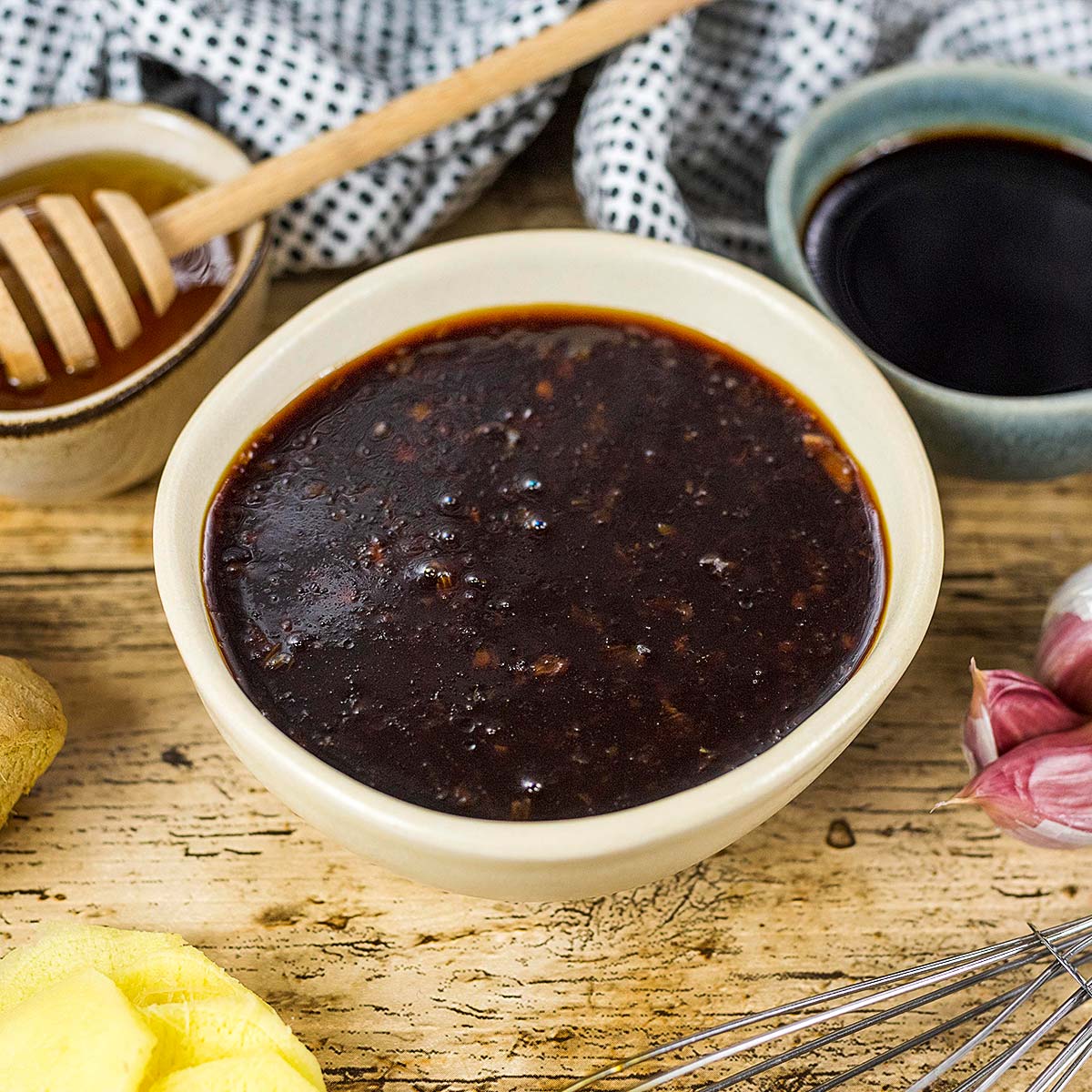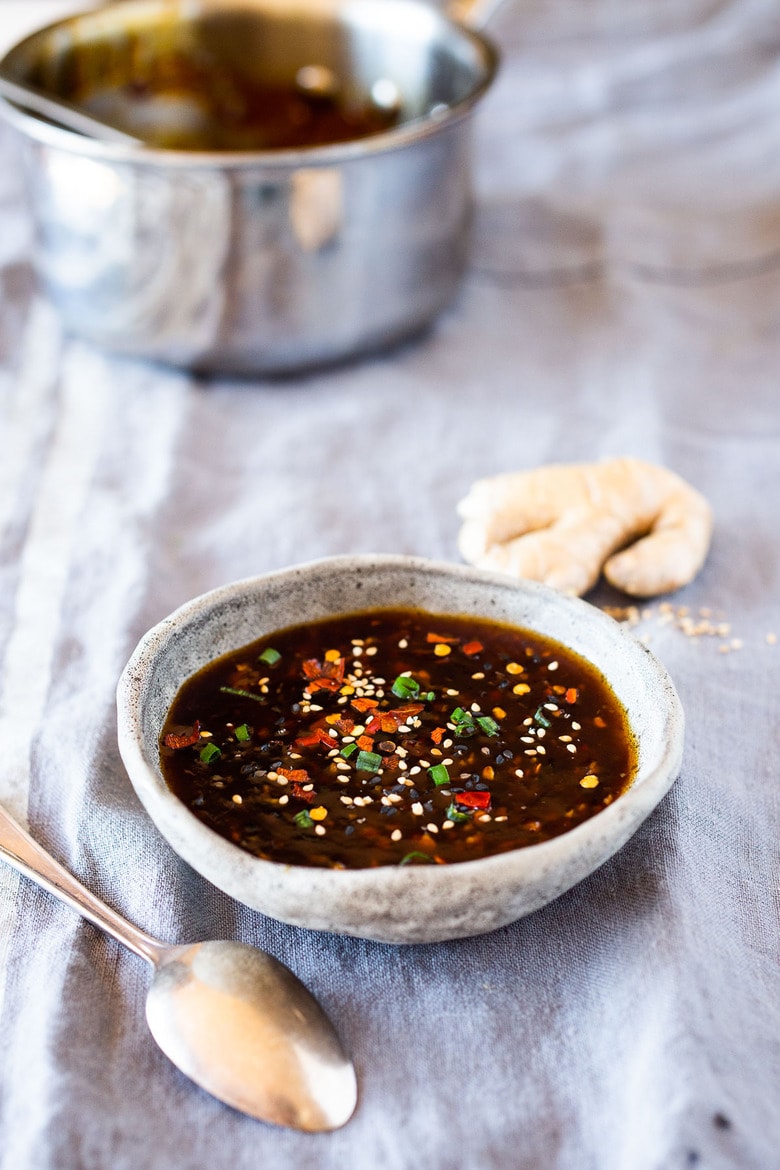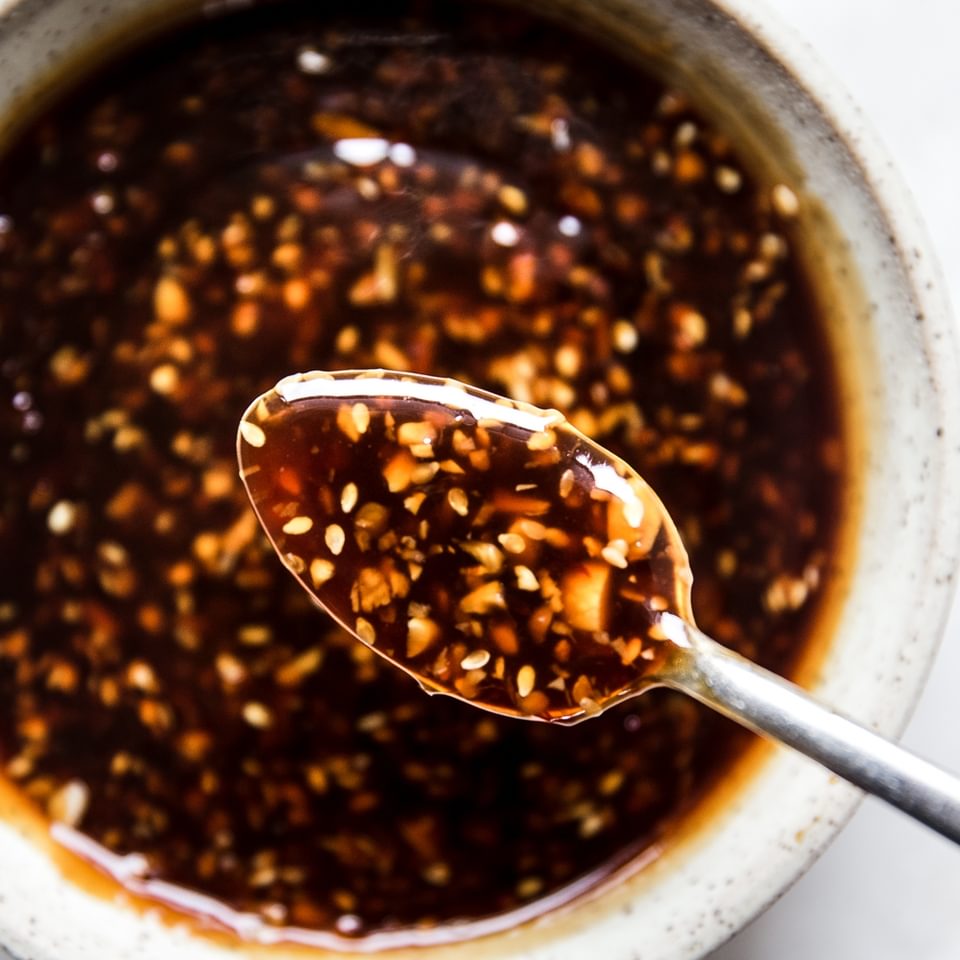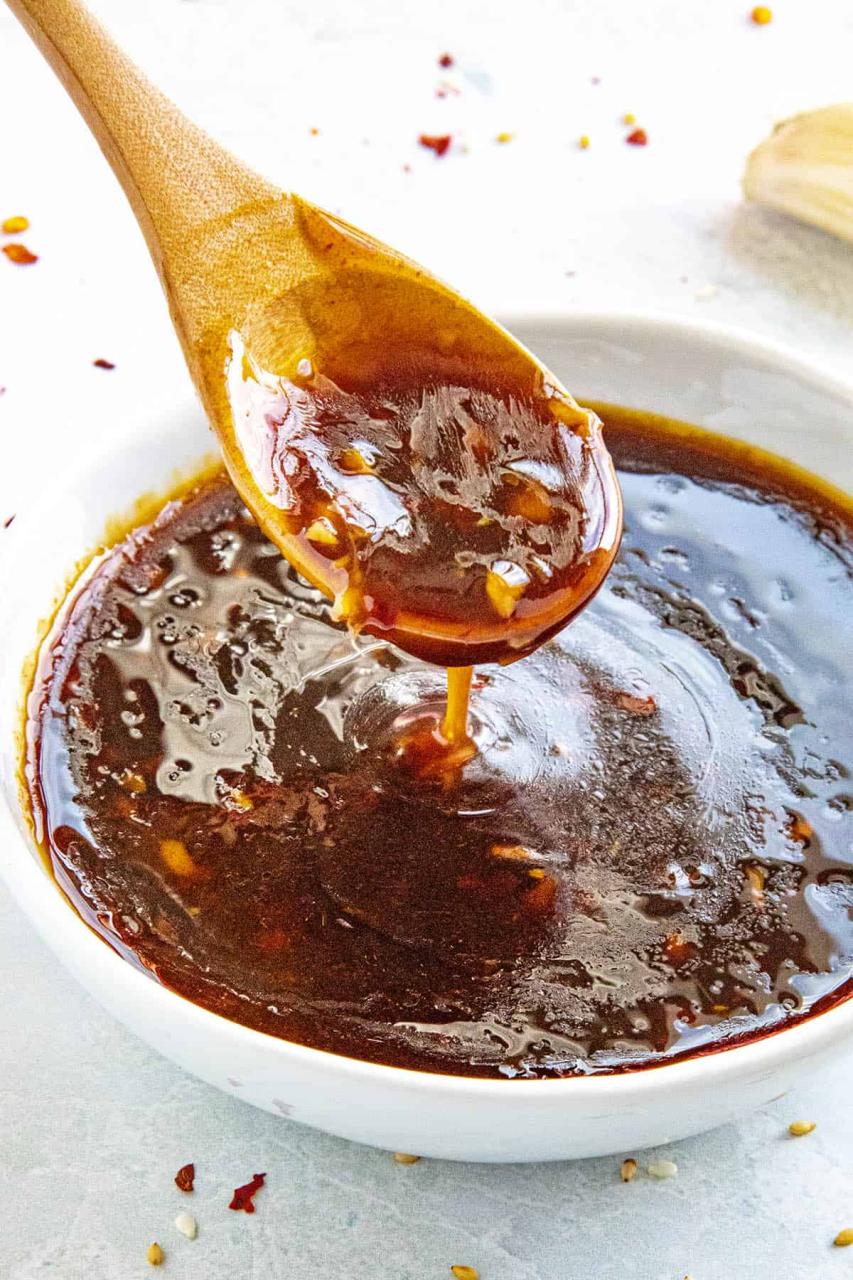Healthy teriyaki sauce starts with a balance between sweet, savory, and sometimes a hint of spicy-flavor profiles. Traditional teriyaki sauce typically includes ingredients like soy sauce, a sweetening agent such as sugar or honey, ginger, garlic, and sometimes mirin, a type of rice wine. To make a healthier version of teriyaki sauce, substitutes or reductions might be used to lower the calorie, sodium, or sugar content.
One approach to create a healthier teriyaki sauce is to reduce the sugar content or replace it with natural sweeteners such as pureed fruits, stevia, or monk fruit sweeteners which offer sweetness without the added calories and impact on blood sugar levels. For those looking to reduce sodium intake, low-sodium soy sauces or tamari can be used. Alternatively, coconut aminos provide a soy-free and lower sodium alternative with a similar umami flavor.
Thickeners in teriyaki sauce often include cornstarch or wheat flour. Health-oriented adaptations might use arrowroot or tapioca starch for individuals with corn or wheat sensitivities. These starches can also contribute to a glossier finish without adding extra calories or affecting blood sugar too dramatically.
Healthy Teriyaki Sauce Recipe

Healthy Teriyaki Sauce
Equipment
- 1 saucepan
Ingredients
- 6 tbsp. mirin
- 1/2 cup soy sauce
- 2 tsp minced ginger
- 3 or 2 tbsp sugar
- 2 cloves garlic minced
- 1 1/2 tsp cornstarch optional
- 6 tbsp. water
Instructions
- Combine the soy sauce, garlic, ginger, mirin , sugar and 5 tbsp of water together in a saucepan, mix well and bring to a boil over medium –high heat.
- Dilute the cornstarch with the remaining tbsp of water and set aside.
- Reduce the heat to medium heat and let it simmer for about 3 minutes
- Stir the cornstarch and add to the saucepan, stir well to combine and cook for another 2 minute or until sauce slightly thickens
- Remove from the heat and let the sauce cool to room temperature.
- Store sauce in an air tight container and keep in the fridge until time of serving, use within a month
Cooking Tips about Healthier Teriyaki Sauce

Teriyaki sauce, traditionally a Japanese condiment, has gained international popularity. The classic teriyaki sauce typically contains soy sauce, mirin (a sweet rice wine), and sugar. It is often used as a marinade or glaze for meats and vegetables. While delicious, standard teriyaki sauce can be high in sodium and sugar, which might not align with healthier dietary goals. To create a healthier version of teriyaki sauce, one can consider several modifications without significantly impacting the authentic taste.
Firstly, the base of teriyaki sauce is soy sauce, which contributes to its high sodium content. To mitigate this, one can use low-sodium soy sauce or tamari, which is a type of soy sauce that traditionally contains little to no wheat, making it a potential option for those avoiding gluten. Another alternative is coconut aminos, which have a lower sodium content and are soy-free, catering to those with soy allergies or following a paleo diet.
The second consideration should be the sweet component, typically provided by mirin and sugar. Mirin contains sugar, but it also has a distinct flavor that contributes to the depth of teriyaki sauce. One could reduce the amount of sugar or replace it with a sugar substitute such as stevia or monk fruit sweetener, both of which have no calories and do not raise blood sugar levels. However, when tweaking sweetness, it’s essential to add these substitutes gradually and taste frequently since their sweetness profile can differ from sugar – they can be significantly sweeter, and it’s easy to overshoot the desired taste.
In addition to replacing ingredients, one could also incorporate natural sweeteners like pineapple juice, which can add not only sweetness but also some tartness, complementing the overall flavor profile of the sauce. Apple cider vinegar could be used to balance the sweetness and add a healthful component, as it is linked to several potential health benefits, including improved blood sugar control.
Enhancing the sauce with additional flavors can increase complexity while maintaining healthfulness—ginger and garlic, for instance, are not only flavorful but also possess anti-inflammatory properties. Finely minced or grated, they can be sautéed in a minimal amount of a healthful oil, such as sesame or avocado oil, before adding the liquid components.
Lastly, thickening agents often used in teriyaki sauce, like cornstarch, can be replaced with healthier alternatives like arrowroot or tapioca starch, which are considered more natural and may be better tolerated by those with certain dietary sensitivities.
Serving suggestions about Healthy Teriyaki Sauce

Teriyaki sauce, a traditionally Japanese condiment, often contains a mix of soy sauce, sugar, sake, or mirin, and various spices. With the popularity of global cuisines and a focus on healthier diets, many individuals seek to make teriyaki sauce with adjustments that lower the sugar or sodium content without compromising the distinctive sweet and savory flavor profile that teriyaki is known for.
One approach to creating a healthier teriyaki sauce is to reduce the sugar content. This can be achieved by substituting traditional sweeteners with natural alternatives such as honey, which can offer a richer flavor and the added benefits of antioxidants. Additionally, using ingredients like dates, which have a natural sweetness, could be blended into the sauce for sweetness without refined sugar.
Addressing sodium content is another key aspect of making a healthier teriyaki sauce. One could use a low-sodium soy sauce or tamari as a base. An alternative is to dilute regular soy sauce with water, though this might slightly affect the intensity of the sauce’s flavor.
To enhance flavors without adding extra sugar or sodium, incorporating aromatic ingredients such as garlic, ginger, and onion can offer complexity to the sauce. Toasted sesame oil could give depth and a hint of nuttiness, which also adds to the perception of richness in the sauce without needing additional sweeteners or salt.
Acidic components like rice vinegar or a squeeze of fresh citrus juice can also bring balance to the sauce and brighten the overall taste. It is also beneficial to include a thickener such as arrowroot powder or cornstarch, which can help achieve the desired consistency without added fats or sugars.
In summary, a healthier teriyaki sauce can be made by reducing refined sugars in favor of natural sweeteners, cutting down sodium content with low-sodium soy sauce options or dilution, and intensifying flavors with fresh aromatics and depth-enhancing ingredients like sesame oil. Citrus or vinegar can balance the sweet and savory elements, while thickeners can adjust texture without unhealthy additives.
Top 5 FAQs about Healthy Teriyaki Sauce

- What makes a teriyaki sauce “healthy”? A “healthy” teriyaki sauce is typically one that has a lower sodium and sugar content compared to traditional recipes. This can be achieved either by using reduced-sodium soy sauce or tamari, incorporating natural sweeteners like honey or agave nectar in lieu of refined sugars, or adding less sweetener overall. Some healthy versions might also include additional ingredients rich in nutrients, such as ginger or garlic, which have their own health benefits.
- How can I make teriyaki sauce with less sodium? To make teriyaki sauce with less sodium, you can use a reduced-sodium soy sauce or tamari as the base flavor. Another option is to dilute regular soy sauce with water or use an alternative low-sodium liquid base like vegetable stock. Always look for “low-sodium” labels when purchasing ingredients, and be mindful of the total volume of soy sauce used in your recipe.
- Can I make teriyaki sauce without added sugars? Yes, it is possible to make teriyaki sauce without added refined sugars. Sweetness can be imparted naturally using fruits like pineapple or mango purees, or sweeteners like stevia that don’t contain actual sugars. However, the flavor profile may differ from traditional teriyaki when substituting these ingredients.
- Is there a gluten-free alternative for teriyaki sauce? For a gluten-free teriyaki sauce, it’s essential to replace traditional soy sauce with a gluten-free option, such as tamari that has been certified gluten-free. Additionally, check that any other ingredients you use, like mirin or sake, do not contain gluten. Cross-contamination is also a factor to consider if you’re strictly avoiding gluten for health reasons such as celiac disease.
- Are there any store-bought healthy teriyaki sauces? There are store-bought options for healthier teriyaki sauces available on the market. Look for brands that advertise as organic, low-sodium, no added sugars, or gluten-free, depending on your dietary requirements. Always read the nutrition labels and ingredient lists to ensure the product meets your health standards, as the definition of “healthy” can vary significantly.
In crafting a health-conscious teriyaki recipe, it’s also worth considering the inclusion of ingredients with beneficial properties. For example, freshly grated ginger and garlic add antioxidant and anti-inflammatory benefits as well as vibrant flavors. Using apple cider vinegar instead of mirin can introduce more healthful elements, like gut-friendly probiotics, while still imparting a tangy note to the sauce.
In conclusion, a healthy teriyaki sauce is about making mindful substitutions and reductions while aiming to retain the classic flavor profile. Focus on natural sweeteners, reduced sodium alternatives, and beneficial additives is key to crafting a sauce that is both delicious and aligns with health-conscious dietary choices.
Leave a Reply